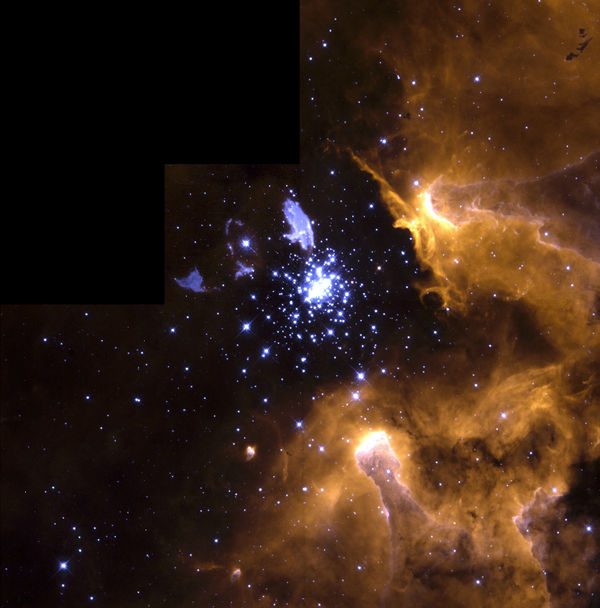Birth of Stars
The early universe was composed mostly of hydrogen. Where the hydrogen was slightly more dense, the gravity of the hydrogen atoms drew it together into clouds. The more hydrogen and helium gathered, the more gravity, until the gas pressure was so great, atoms fused and stars were born.Early star-birth nebulae might hav e looked like the Horsehead Nebula, except without the horse head, since there was no dark dust in the Universe, only hydrogen and helium gas, and traces of lithium and beryllium metals.
However, later nebulae contained remnants of all the elements fused in earlier stars and supernova shock waves. In most color images of nebulae, the atomic hydrogen gas appears magenta, the color emitted by excited hydrogen atoms. A detailed study of the light shows wavelengths due to other elements too.
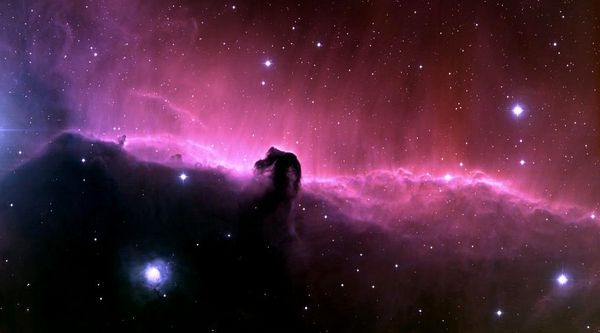
In the Eagle Nebula (M16, shown below) dusty gas is forming new stars. The columns are eroded by light from a hot young star, except where there is a shadow of a dense dark star-forming cloud at the top. A little below to the right is a protoplanetary disk, in which elements have already begun to combine into compounds, and dust into new worlds.
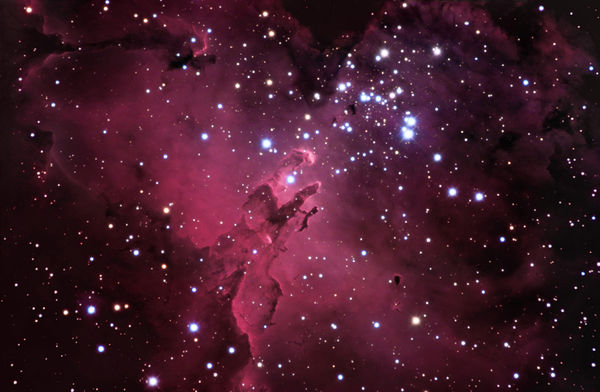
The Orion Nebula, which is visible as the middle star of the knife in Orion's belt, is also a starbirth nebula.
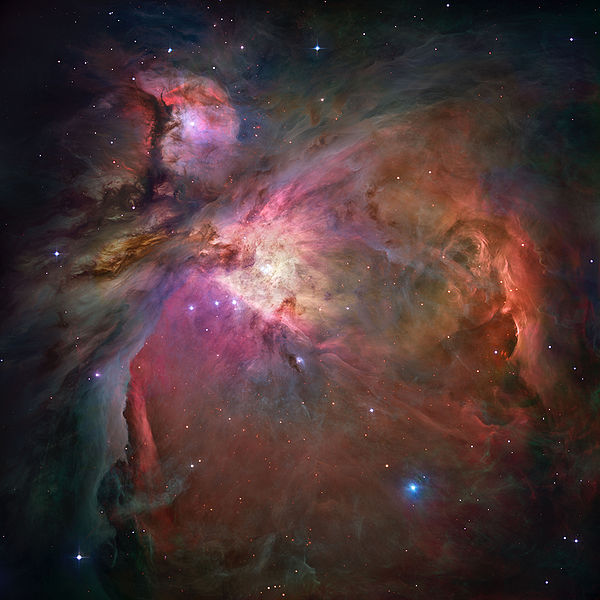
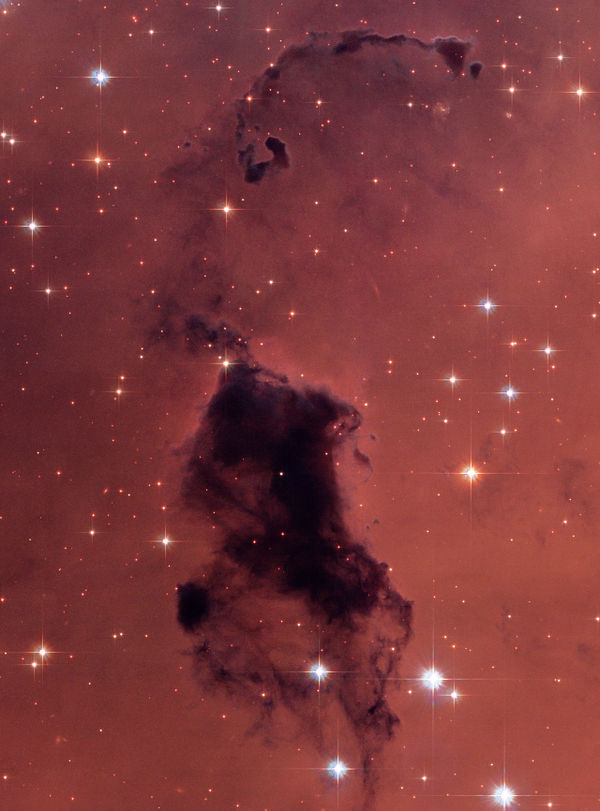
Bok globules in the Orion Nebula become protoplanetary disks. The dark disk to the right is the most dense, and if you look carefully you can see the star is beginning to glow in the middle. If all goes well, and other stars don't blow it apart, the dark dust may collect into planets, asteroids, comets, and moons. These Bok globules and protoplanetary disks are where most compounds are formed, from water to organic compounds such as amino acids and nucleotide bases.
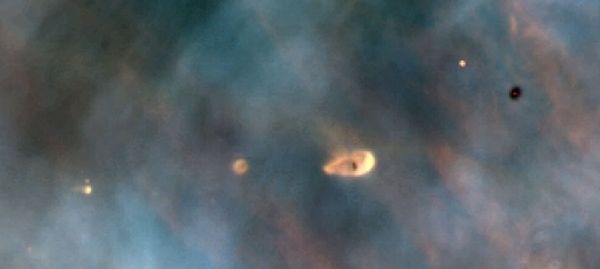
Below is a closer view of the little protoplanetary disk, showing its bright new glowing star.
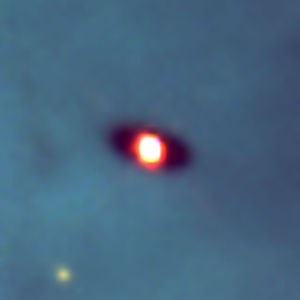
Most stars are formed in clusters. Some of these clusters are well known, such as the large but faint Rosette Nebula that is part of the nearby Taurus Molecular Cloud.
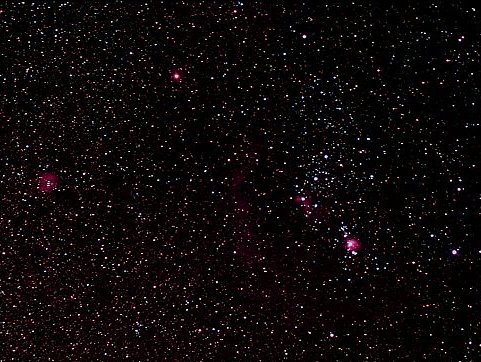
The Rosette is 130 light years in diameter and has a mass of 10,000 Suns. While it is too faint to see, it covers as much of the sky as two full Moons. Although it seems larger in the sky than the Orion Nebula, it is more than three times farther away from us.
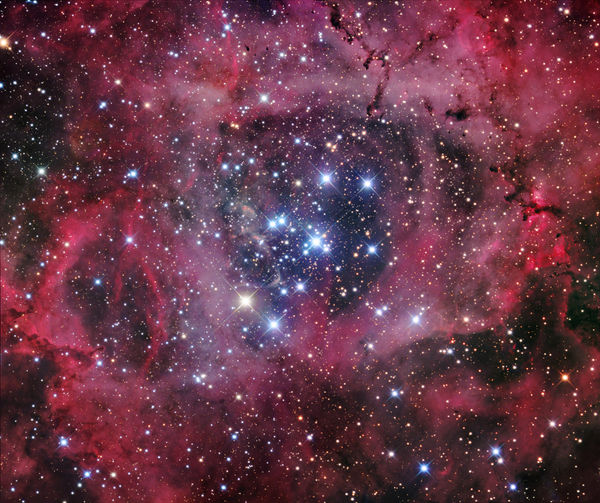
The young Pleiades is moving through space, and passing through a cloud of dust that makes the reflection nebula in this picture.
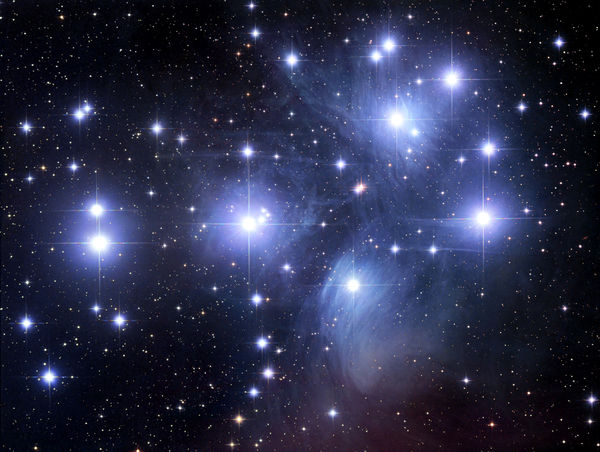
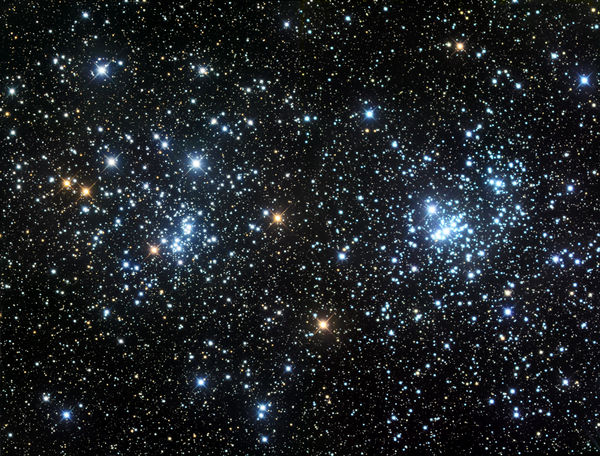
This last image captures all the stages of a star's life cycle, starting with the large dusty gaseous nebula, Bok globules and protoplanetary disk in the upper right and lower left corners. Pillars of gas and dust gathering and already glow from new stars within. The central cluster of bright blue main-sequence Wolf-Rayet and Type O stars within form the NGC 3603 star cluster. And, the blue supergiant with its ring and bipolar outflow marks the end of the stellar life cycle.
